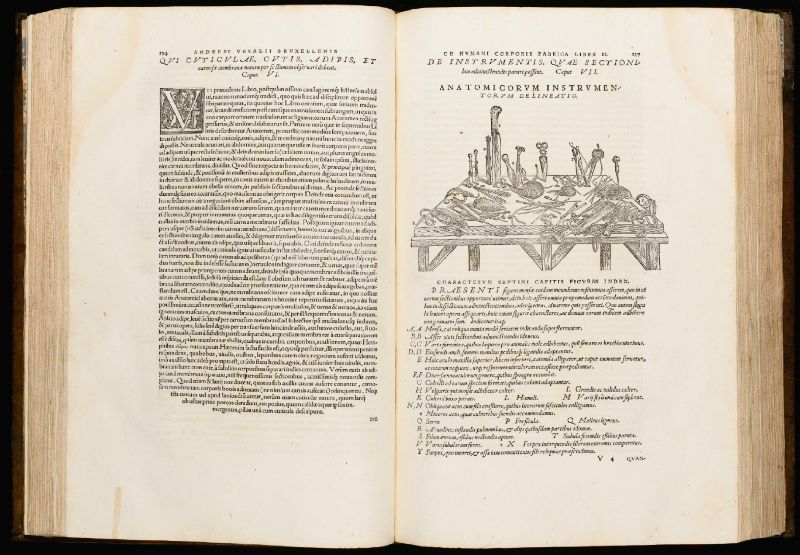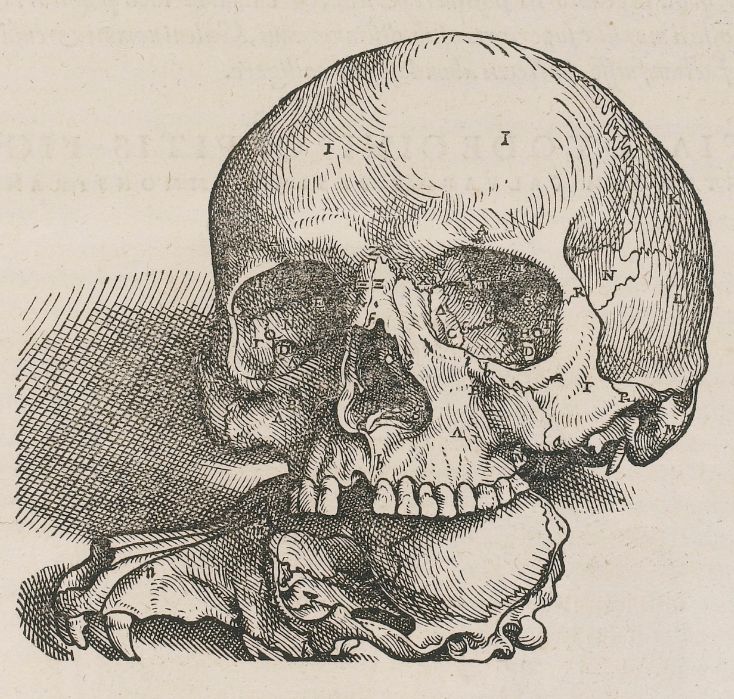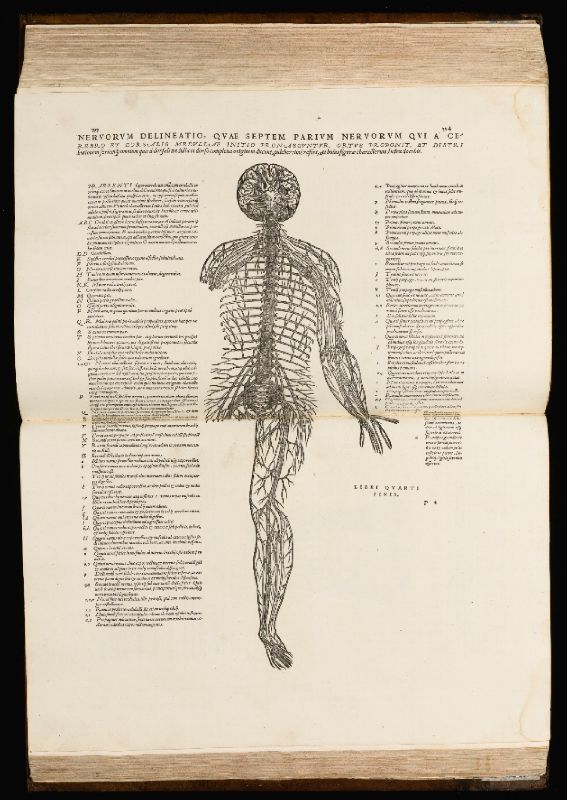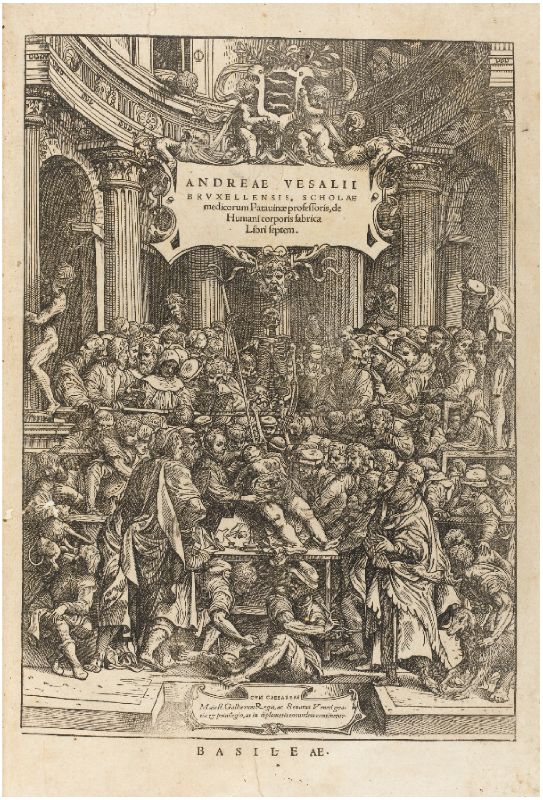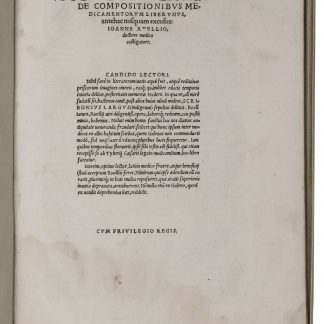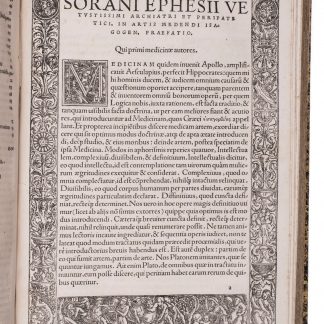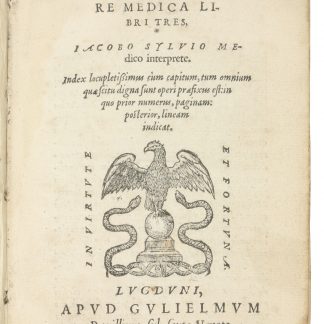[VERKAUFT]
Dieses Stück ist bereits verkauft. Am Ankauf eines gleichwertigen Exemplars bzw. von Stücken ähnlicher Bedeutung sind wir immer interessiert.
The birth of modern anatomy
De humani corporis fabrica libri septem.
Folio (428 x 282 mm). Woodcut title-page depicting a lecture hall with the dissection of a corpse, woodcut portrait of Vesalius (aged 28) with a dissected arm on *6v, woodcut initials (depicting cherubs conducting dissections or robbing graves), woodcut illustrations (some full-page), woodcut and letterpress double-sided folding plate at m3, with another sheet signed m3, woodcut and letterpress folding plate at p4, woodcut printer's device on final verso. Early 18th-c. speckled calf with contemp. marbled pastedowns and later endpapers, spine with raised bands marked by double gilt fillets, red morocco lettering-piece, edges speckled but retaining contemporary title lettered on foot of text-block. Modern slipcase.
First edition of the most famous anatomical work ever published.
With the publication of "De humani corporis fabrica" (when he was only twenty-eight) Vesalius revolutionised both the science of anatomy and how it was taught. In his preface, he describes his disappointing experiences as a student in Paris and Louvain, stating his intention to reform the teaching of anatomy by giving in this book a complete description of the structure of the human body and thereby drawing attention "to the falsity of Galen’s pronouncements". Vesalius also broke with tradition by performing dissections himself instead of leaving this task to assistants: the striking and dramatic title-page illustration shows him conducting such a dissection, his hand plunged into a female cadaver (striking in itself, as only the cadavers of executed criminals could be legally dissected and female criminals were rarely executed), surrounded by a seething mass of students.
The "Fabrica" is also revolutionary for “its unprecedented blending of scientific exposition, art and typography” (Norman). Vesalius took great care with every aspect of his book: his letter to Joannes Oporinus, reproduced in the prefatory matter (*5r-v), discusses the layout of the book, the system of reference between text and image, and the delivery of the woodcut blocks. The numerous and elegant illustrations, including the title-page and the frequently disarming woodcut initials, were entrusted to Jan Stephan van Calcar (1499-1546), a student of Titian who had also worked on Vesalius's "Tabulae anatomicae sex" of 1537-38. The beauty and accuracy of these woodcuts led to frequent piracy, despite Vesalius's attempts to protect his work with various privileges (as stated at the foot of the title-page).
B2-5 and 3-4 transposed. Light dampstaining to upper corner of textblock. Title-page very slightly soiled with a few small holes (one affecting image) and laid down; a few small marginal paper repairs (that on Q5 touching image but without loss). A few small abrasions and repairs on lower cover; extremities repaired; small tear to head of spine. A tall copy.
PMM 71. VD 16, V 910. Cushing VI.A.1. Eimas 281. Norman 2137. Wellcome 6560. Graesse VI, 289.


